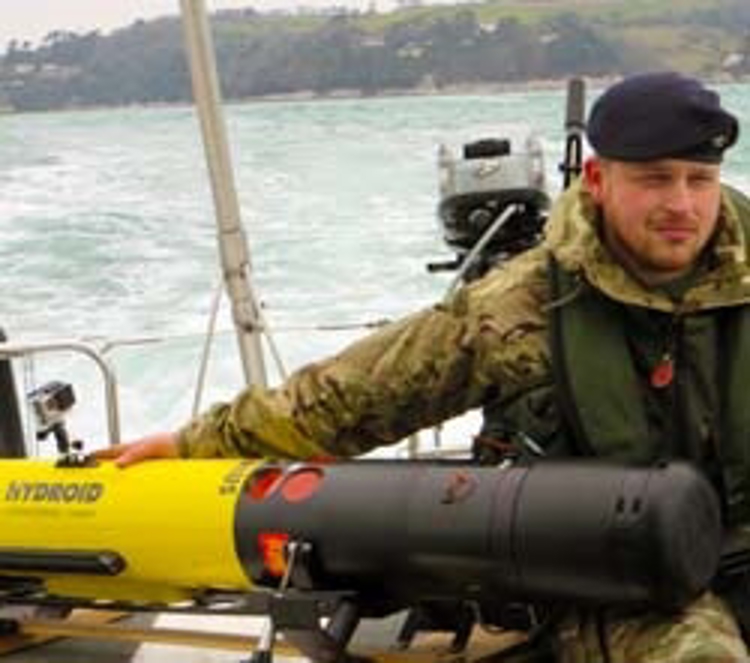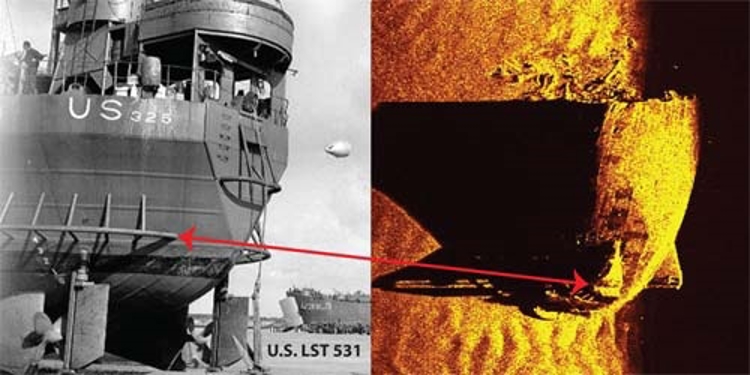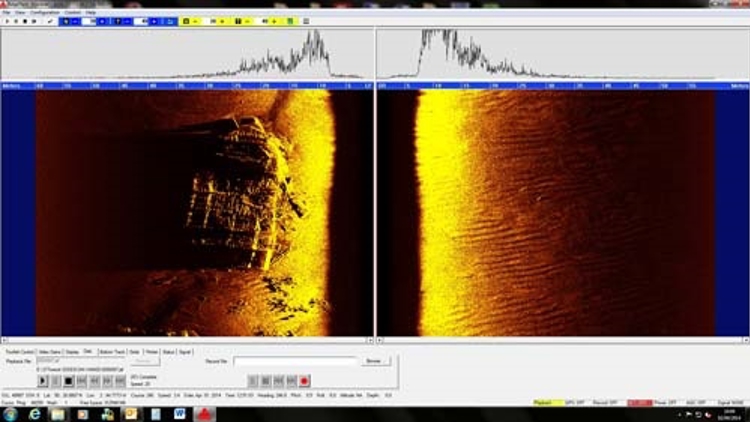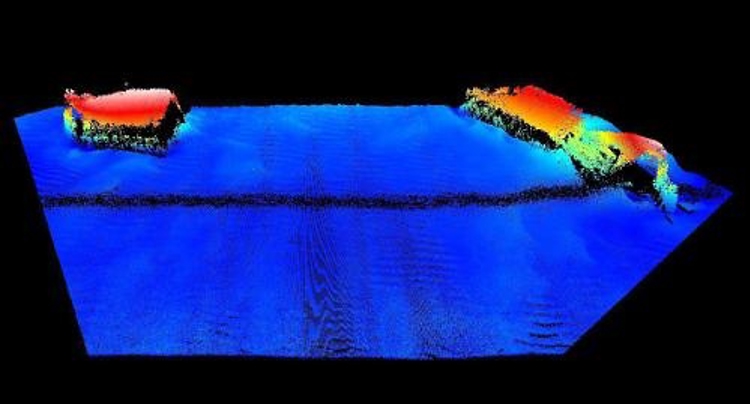A successful partnership between Hydroid Inc. (a KONGSBERG company) and Kongsberg GeoAcoustics has produced the first high-definition images of two WWII U.S. Landing Ship Tanks (LSTs) that lie off the coast of South Devon, UK.
The vessels were sunk on April 28, 1944 by German torpedo boats that interrupted the Exercise Tiger training mission, which took place in southern England. The training was the secret rehearsal for the Utah Beach portion of the D-Day invasion in Normandy, France.
Well kept secret

The tragedy left nearly 1,000 U.S. servicemen dead, making it one of the deadliest training-related events of the war. The carnage was far greater than the actual invasion on Utah Beach, yet full details about the attack weren't made public immediately. To keep the Allies' invasion plans secret, those who survived the attack were ordered not to say a word. The death toll wasn't announced until nearly two months after D-Day, according to The Associated Press. Full details were not disclosed until 1974, when records of the torpedo strike were declassified. The historical account of the D-Day invasion in France has overshadowed the UK training tragedy for decades. As a result, it's one of the best-kept secrets of World War II.
70th anniversary
With April 28th, 2014 marking the 70th anniversary of this event, Graham Lester, Hydroid's Vice President of Sales & Marketing, wanted to help pay tribute to the lives lost during the Exercise Tiger tragedy. After visiting the beachside memorial in Torcross, UK last summer, Lester started planning the Hydroid Exercise Tiger AUV Mission to commemorate the event. The idea was to use an AUV to capture high-resolution images of the wreckage and help shed additional light on this historic tragedy. Graham wanted to help complete the story of what happened for the servicemen and families involved, and provide future generations with a better account of the events that took place in the area. "These images are adding to the historic photo album that honours the lives lost during the Exercise Tiger tragedy in 1944," said Lester.

Between March 10th and 21st, 2014, two AUV operating teams, one from Hydroid Europe and the other from the Royal Navy's Maritime Autonomous System Trials Team (MASTT), undertook missions to collect data from the area. Hydroid's team focused on the last known location of the two torpedoed LSTs - 531 and 507 - approximately 40 miles off the coast, in the English Channel. MASTT focused on the area just off Slapton Sands, where they located an object of interest. They are still analyzing the data to understand if the object is related to the 1944 tragedy.
Using the REMUS 100 autonomous underwater vehicle (AUV) equipped with both Edgetech side-scan sonar and Kongsberg GeoAcoustics' GeoSwath multibeam sonar, the Hydroid team produced the first high-definition sonar images ever collected of the two wrecks. This was the first time in history that an AUV had surveyed the area.

New details
"We take pride in the fact that our technology was used to contribute toward this commemorative effort"
"We take pride in the fact that our technology was used to contribute toward this commemorative effort," said Peter Hogarth, President of Kongsberg GeoAcoustics. "It is rewarding to know our engineers offered their time to such an important project. The high-resolution sonar investigation of this 150-footdeep site reveals many previously unseen details. The images, showing the ships broken in two, also bring home the scale and tragedy of what happened that night, seventy years ago. The images help tell a story that, until now, has remained largely untold."

Collaboration
In the true spirit of one of the company's core values, collaboration, employees from Hydroid Inc., Kongsberg GeoAcoustics and Kongsberg Maritime, Aberdeen all worked together to bring these images to the public. Hydroid was represented by Graham Lester, Vice President, Sales & Marketing, Richard "Bungy" Williams, Regional Manager of Hydroid Europe and Hydroid Europe Field Technicians, Mostefa Khalfallah, and Iain Roalf. Kongsberg GeoAcoustics provided expertise from Peter Hogarth, President, Ralf Timm, Vice President, Sales and James Baxter, Applications Manager. James was the individual who actually processed the data and put countless hours into creating the data video, which is now, in the public domain. Craig Wallace, Subsea Applications Engineer, Kongsberg Maritime, Aberdeen was also instrumental in the use of the heave/depth compensation methodology software he developed.
Media coverage
The Hydroid Exercise Tiger AUV Mission has received a tremendous amount of international media coverage. A recent NBC.com article included the following:
Laurie Bolton, honorary director of the Tank Memorial site, was born eight years after her uncle, Sgt. Louis A. Bolton, perished during Exercise Tiger, she said. His body was never recovered. "In recent years we had divers down at the wrecks and sonar, but nothing like this," Bolton told NBC News after seeing the sonar images. Bolton said the images help clear up some of the mystery surrounding the state of the sunken ships and "complete the story."